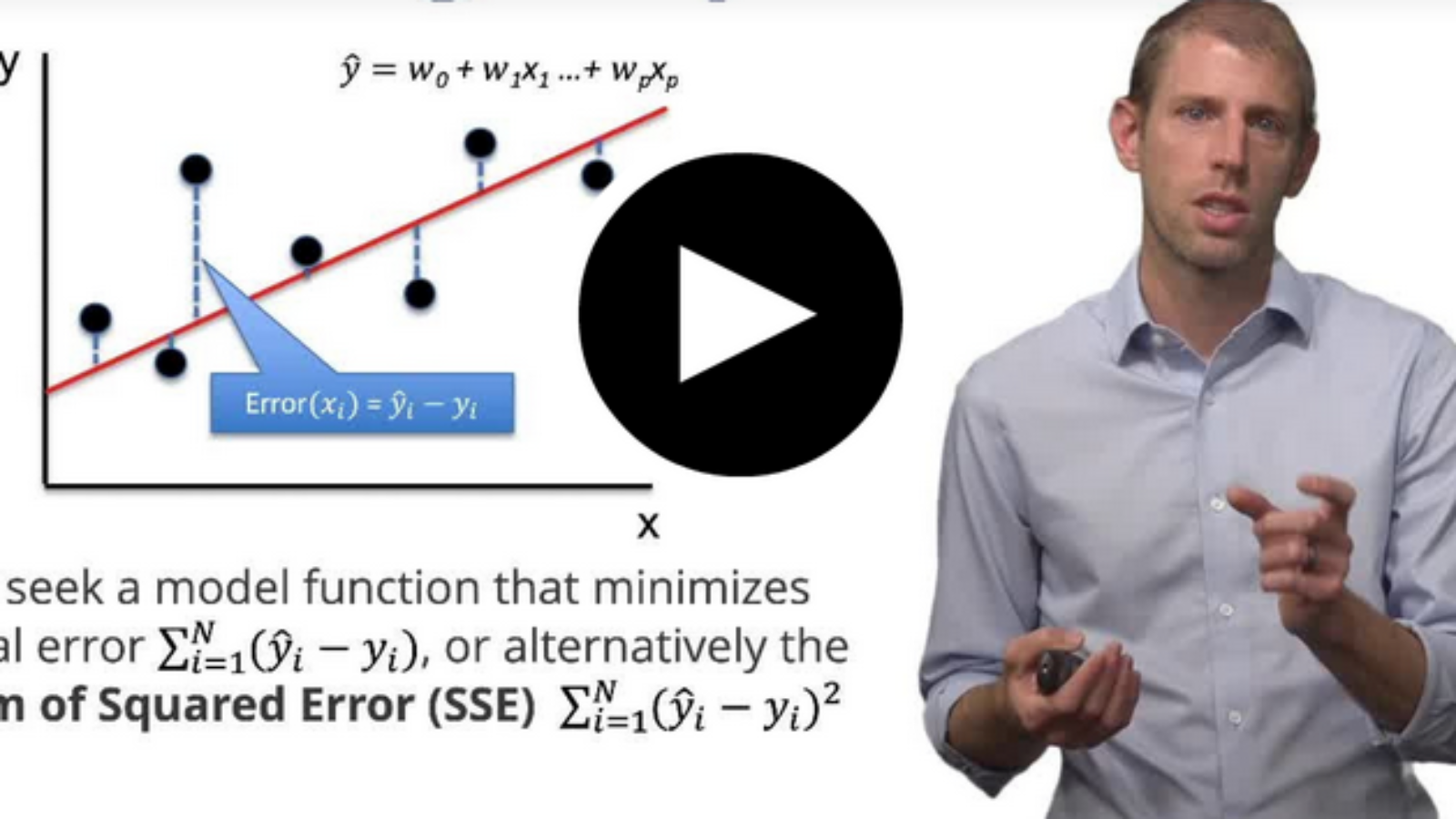‘Intelligent Classroom’ Apps Use AI to Improve Teaching & Learning in Real-Time
Mark Schreiner
Duke-developed machine-learning tools show promise of focused, personalized instruction—regardless of how many students are being taught

Using creativity and lines of computer code, Duke Engineering’s Jon Reifschneider has created an assistant that evaluates his teaching and measures his students’ progress.
This fall, Reifschneider hopes to bring another virtual teaching assistant online—a machine-learning powered tutor that can assess a student’s ability to write computer code and provide them a personalized, adaptive learning path based on their current abilities and their motivations for learning to program.
This executive-in-residence and master’s-level instructor at Duke’s Pratt School of Engineering has aimed these powerful computational tools to challenges related to how he teaches and how well his students learn.
Like every good engineering project, it started with a problem.
“Codeable provides a new learning space for the programmer community that creates personalized learning plans and offers useful online resources throughout a learner’s journey, increasing the success rate for those new to programming.”
Qi Dai | Duke Master of Engineering Management Student
“Even in a small class, it is difficult for an instructor to know on a day-to-day basis where students are doing well and where they are struggling,” said Reifschneider, who is director of the Duke AI for Product Innovation (AIPI) Master of Engineering degree program. “In some cases, mastery might not be understood until a mid-term exam or after a final exam. By then, it’s too late to do anything about it. Plus, it’s impossible, usually, to know in real-time if the root of the problem is specific to the student, or if it was a broader class-wide issue related to how well (or poorly) a topic was taught.”
To shorten the feedback loop so that he could improve the lessons he was delivering to his students, Reifschneider decided that an AI/ML tool might provide a solution.
As he teaches in his master’s courses in data science and machine learning, the first step is acquiring data, preferably lots of data.
In an unexpected silver lining of the mass transition to remote instruction during the COVID-19 pandemic, Reifschneider had lots of data with which to work.
From Information to Insight
“Everything we did at Duke moved online,” he said. “This provided rich pools of data.”
All lectures were virtual, meaning they were recorded and transcribed. Every word Reifschneider spoke in the lectures was available for AI evaluation. Assignments and quizzes were digital, too.
To this point, it was a reasonably standard data-acquisition process. The answers Reifschneider sought on the quality of his teaching and on the progress of his students were in there, in that mound of data. But how to get the answers out, and on a useful timescale, was an engineering challenge.
 By human eye and hand, that analytical task would take perhaps months. Machine learning could do those analyses far faster than any human. Its programming could “teach itself” what good student performance looked like and report where it saw it and where it was lacking. ML could analyze the thousands and thousands of words in Reifschneider’s lectures and map them to the core topics described in the course’s syllabus.
By human eye and hand, that analytical task would take perhaps months. Machine learning could do those analyses far faster than any human. Its programming could “teach itself” what good student performance looked like and report where it saw it and where it was lacking. ML could analyze the thousands and thousands of words in Reifschneider’s lectures and map them to the core topics described in the course’s syllabus.
But, as he teaches his students in a course on the limitations and ethical dimensions of AI and ML, such systems are far from perfect. Programming and results must be reviewed for bias and accuracy. A good developer constantly assesses and makes improvements.
Into his machine learning tool, dubbed “Intelligent Classroom,” he poured Zoom transcripts, quiz questions and answers, and student assignments. Then, the Intelligent Classroom Assistant began analyzing the data and offering insights.
Take quizzes for just one example. All questions were multiple-choice to facilitate analysis. In addition to showing neatly how many students answered each question correctly, the tool scored each question for difficulty. For example, in the Week 3 quiz, less than 30 percent answered Question 5 correctly. Why? Was the topic not taught clearly? Was the question unreasonably tricky?
Since the analysis was done quickly, Reifschneider had time to revisit topics in the following lecture or office hour, to fill learning gaps among students in real-time. He could also make a note for next semester to potentially reword questions that scored as needlessly difficult.
The tool allowed him to do a similar analysis for each student, providing personalized views of learning gaps and problem topic areas. This informed one-on-one student meetings.
His students in a recent semester were given access to a student portal where they could see their Intelligent Classroom data for themselves and access an ML-derived index of course lecture transcripts. A student who had trouble mastering a topic such as “types of missing data” would get a direct link to the video recording of the Week 7 lecture with instructions to start it at the 1 hour, 37-minute mark. Students could also use plain language to search the lectures; the tool provided results similar to an online search engine with links to relevant portions of lectures.
Improving the Performance of Students and Instructors
Reifschneider said the tool has great potential to improve the performance of both instructors and students. Perhaps most significantly, the Intelligent Classroom can provide individualized instructional insights no matter how many students are in a course.
“Beyond helping teachers improve class quality, machine-learning tools could enable them to do so at vastly increased scale,” Reifschneider said. “This offers the promise of widespread, personalized teaching, no matter the class size. As a result, instructors could provide more individualized guidance and learners could learn more. Society as a whole would reap benefits, too.”
 This fall at Duke, Reifschneider will introduce his students to a new machine-learning tool called Codeable, which aims to provide personalized support to students learning to code.
This fall at Duke, Reifschneider will introduce his students to a new machine-learning tool called Codeable, which aims to provide personalized support to students learning to code.
The tool is based in part on ethnographic research conducted over the summer by Duke Master of Engineering Management student Qi Dai on the challenges students face in building programming skills.
“Codeable provides a new learning space for the programmer community beyond the physical classroom that creates personalized learning plans and offers useful online resources throughout a learner’s journey, increasing the success rate for those new to programming,” Dai said.
Inside Codeable is official background documentation for the Python coding language, large-scale digital libraries created at multiple institutions that match snippets of computer code with their meanings in plain English and Reifschneider’s own database of programming-code/English-word “pairs.”
A recent demonstration showed how a student could point Codeable to code they have already written. Codeable would then review the code to determine their proficiency in different aspects of programming. It would recommend a set of next topics to learn and provide links to those lessons. After completing that work, the student could return to Codeable for an almost instant analysis of their progress since the last visit and receive additional personalized suggestions.
“My big discovery was that sometimes students do not realize what they are struggling with. I needed a tool that could identify issues that are difficult to spot.”
Jon Reifschneider | director, Duke AI for Product Innovation Master of Engineering degree
“The idea for this came from weekly lesson planning,” Reifschneider said. “Intelligent Classroom recommended topics that needed review. Some topics students were struggling with came up again and again, so we returned to those topics in class. My big discovery was that sometimes students realize what they are struggling with, but many times they do not. I thought about building a tool that could work one-on-one with a student as an extension of the course instructor, helping the instructor identify issues that often are difficult to spot.”
The Codeable tutor can understand where a student is struggling, and then scale its recommendations to the student. Its recommendations will grow and progress at the pace the student learns.
Reifschneider has received a grant to support the continued development of the Intelligent Classroom tools from Duke Learning Innovation, an expert group on campus that facilitates online learning and works with faculty to develop new learning technologies, as part of their “Carry the Innovation Forward” program. In the fall, he’ll hire two research assistants to help him build out and improve the system while it continues to be used in AIPI courses.
Codeable will pitch in on making improvements, too. In the world of machine learning, Codeable implements a combination of what is known as “supervised learning” and “unsupervised learning”. It learns patterns from uncategorized data. Then, through mimicry of what it discovers, the machine builds an internal representation of its world and can generate insights based on those patterns.
“Codeable will continue to improve as it goes,” Reifschneider said. “It is not perfect, but it’s proven itself good enough already to be valuable in improving my teaching and my students’ learning.”
